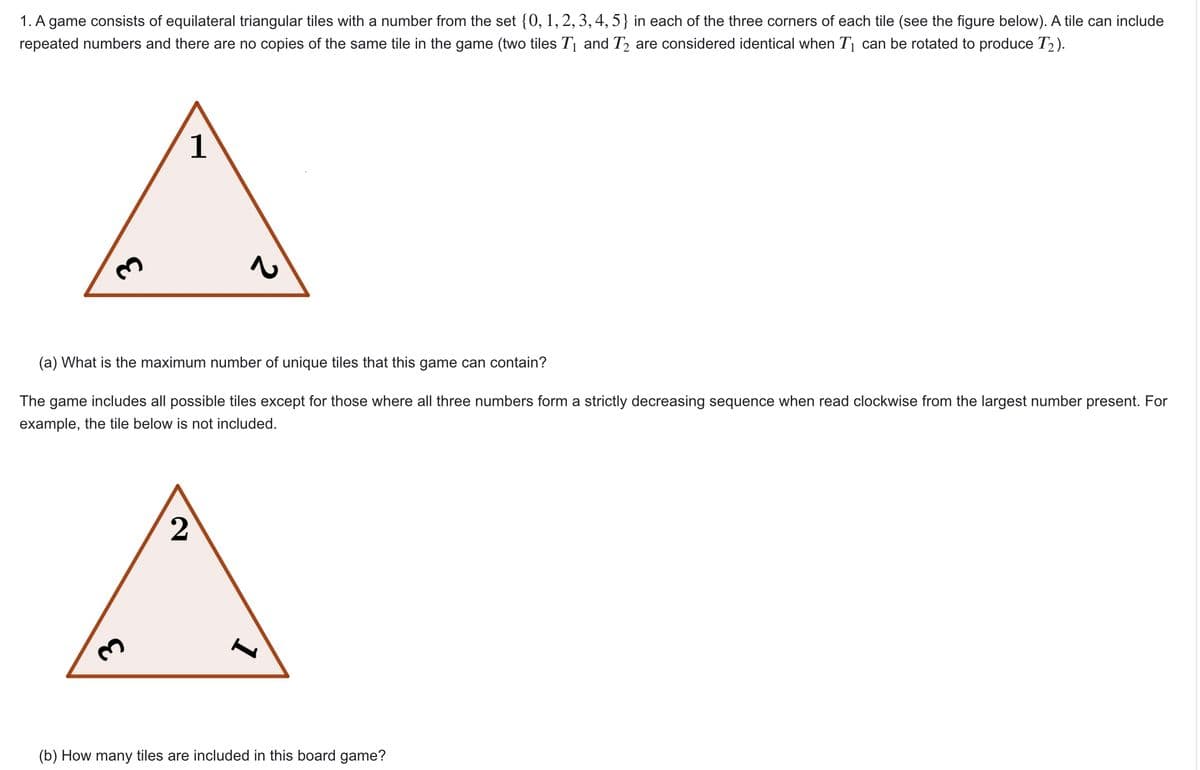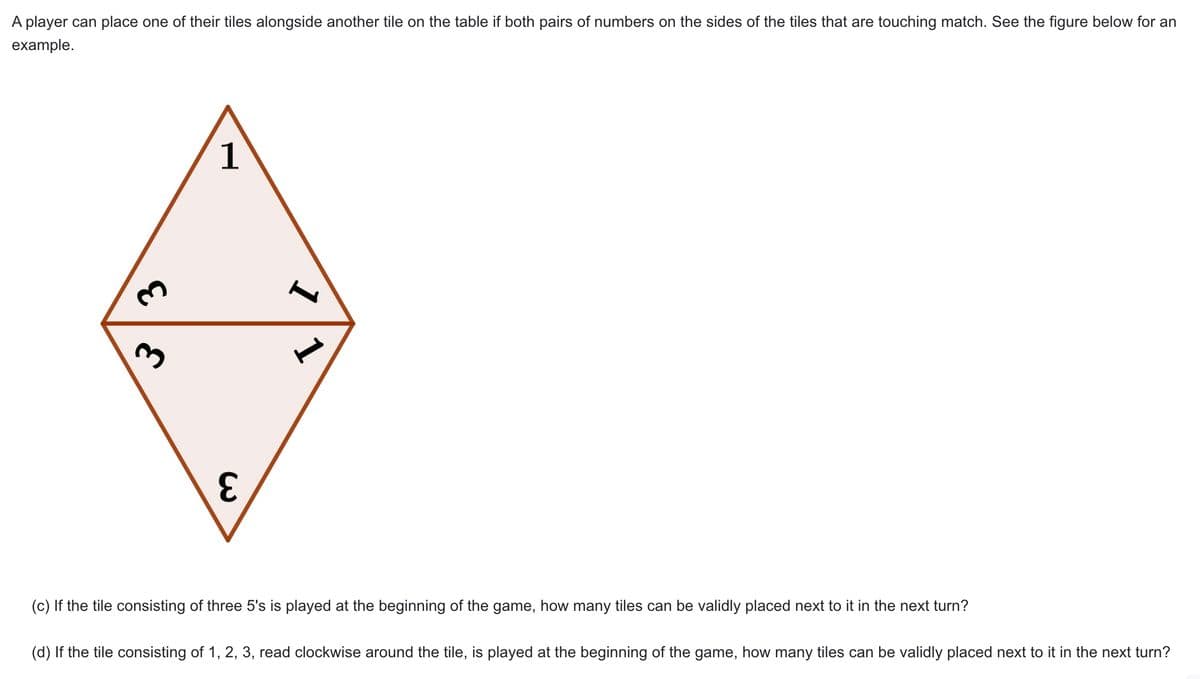1. A game consists of equilateral triangular tiles with a number from the set {0, 1, 2,3, 4, 5} in each of the three corners of each tile (see the figure below). A tile can include repeated numbers and there are no copies of the same tile in the game (two tiles T and T2 are considered identical when T can be rotated to produce T2). 1.
1. A game consists of equilateral triangular tiles with a number from the set {0, 1, 2,3, 4, 5} in each of the three corners of each tile (see the figure below). A tile can include repeated numbers and there are no copies of the same tile in the game (two tiles T and T2 are considered identical when T can be rotated to produce T2). 1.
Linear Algebra: A Modern Introduction
4th Edition
ISBN:9781285463247
Author:David Poole
Publisher:David Poole
Chapter2: Systems Of Linear Equations
Section2.4: Applications
Problem 26EQ
Related questions
Question

Transcribed Image Text:1. A game consists of equilateral triangular tiles with a number from the set {0, 1,2, 3, 4,5} in each of the three corners of each tile (see the figure below). A tile can include
repeated numbers and there are no copies of the same tile in the game (two tiles T and T2 are considered identical when T can be rotated to produce T2).
1
(a) What is the maximum number of unique tiles that this game can contain?
The game includes all possible tiles except for those where all three numbers form a strictly decreasing sequence when read clockwise from the largest number present. For
example, the tile below is not included.
(b) How many tiles are included in this board game?
3
2.

Transcribed Image Text:A player can place one of their tiles alongside another tile on the table if both pairs of numbers on the sides of the tiles that are touching match. See the figure below for an
example.
1
3
3.
(c) If the tile consisting of three 5's is played at the beginning of the game, how many tiles can be validly placed next to it in the next turn?
(d) If the tile consisting of 1, 2, 3, read clockwise around the tile, is played at the beginning of the game, how many tiles can be validly placed next to it in the next turn?
1
Expert Solution
This question has been solved!
Explore an expertly crafted, step-by-step solution for a thorough understanding of key concepts.
Step by step
Solved in 5 steps with 5 images

Recommended textbooks for you

Linear Algebra: A Modern Introduction
Algebra
ISBN:
9781285463247
Author:
David Poole
Publisher:
Cengage Learning

College Algebra
Algebra
ISBN:
9781305115545
Author:
James Stewart, Lothar Redlin, Saleem Watson
Publisher:
Cengage Learning

Linear Algebra: A Modern Introduction
Algebra
ISBN:
9781285463247
Author:
David Poole
Publisher:
Cengage Learning

College Algebra
Algebra
ISBN:
9781305115545
Author:
James Stewart, Lothar Redlin, Saleem Watson
Publisher:
Cengage Learning